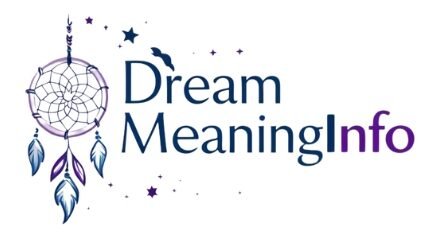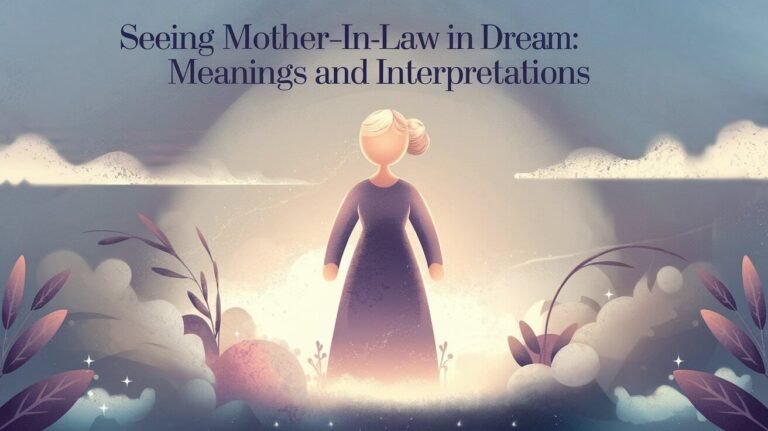Seeing Yourself in Dream Meaning: Unraveling the Mystery

Dreams are complex and captivating, filled with rich symbolism and personal significance. Seeing oneself in a dream is intriguing, whether as a reflection or an encounter with a doppelganger. This aspect of dreams has long fascinated dreamers and researchers, as it offers a glimpse into the subconscious mind.
Dreams often feature common themes like falling, teeth loss, chasing, and flying. Symbols like snakes carry meanings related to control, confidence, avoidance, freedom, or transformation. Dreams happen mainly during the REM stage of sleep, when the brain is active and weaves together memories and emotions.
Exploring self-encounter dreams is a journey of self-discovery. These visions can reveal our subconscious desires, fears, and personal growth. By understanding the science behind dream formation and the symbolic meanings of mirror images, we can gain a deeper insight into our psyche and the dreamworld’s transformative power.
The Science Behind Self-Reflection Dreams
Dream psychology offers a peek into the science of self-reflection dreams. These dreams happen during the Rapid Eye Movement (REM) sleep stage. This stage is known for high neural activity in the brain.
During REM, the brain mixes sensory inputs, memories, and emotions. It creates the complex stories we see in our dreams.
Brain Activity During Mirror Dreams
Seeing ourselves in dreams activates certain brain paths. These paths deal with how we see ourselves and our identity. The brain’s skill in simulating and understanding these self-images is impressive.
Scientists are studying how the brain makes dreams with self-reflection themes.
REM Sleep Patterns and Self-Image
The sleep science of self-reflection dreams ties to REM sleep patterns. In this stage, the brain sorts through many sensory experiences, memories, and emotions. This often leads to dreams that explore our self-image and identity.
The length and how often we have REM sleep cycles affect these dreams.
Neural Pathways in Dream Formation
Dreams, including those with self-reflection, come from complex brain networks. Scientists are working to understand this process better. They want to know how neural activity shapes our dreams and how we see ourselves in them.
| Key Insights | Findings |
|---|---|
| Dream Psychology | Self-reflection dreams occur during REM sleep, characterized by increased brain activity. |
| Neural Activity | Specific neural pathways related to self-perception and identity are involved in mirror dreams. |
| Sleep Science | REM sleep patterns influence the formation and content of dreams, including those featuring self-images. |
Seeing Yourself in Dream Meaning: Unraveling the Mystery
Dreams where you see yourself can reveal a lot about your subconscious. They might show your personal experiences, conflicts, or desires. The strong feelings in these dreams can hint at what’s bothering you.
Looking into these dreams can help you understand yourself better. It can lead to personal growth. By exploring the symbols in these dreams, you can learn more about your mind and its messages.
When you dream about seeing yourself, it’s a chance for self-discovery. It can show you how you see yourself and your emotions. It also lets you peek into your subconscious mind.
Rapid Eye Movement (REM) Sleep and Dream Creation
In the Rapid Eye Movement (REM) stage of sleep, emotions and memories are key. This is when most dreams happen. The brain’s activity here can reveal a lot about your subconscious thoughts and feelings.
Lucid Dreaming and Self-Awareness
Lucid dreaming lets you be aware in your dreams. It’s a chance to explore your self-image and its meaning. You can actively think about yourself and your dreams.
Dream Analysis in Therapy
Therapists use dream analysis to understand their clients. They look into the symbols and meanings of self-images in dreams. This helps clients find and work on underlying issues.
Cultural Perspectives on Dream Symbolism
Dreams are seen differently across cultures. They are often seen as a way to connect with the spirit world or get divine guidance. The meaning of self-images in dreams varies by culture, adding depth to dream analysis.
Symbolic Interpretations of Mirror Images in Dreams
Dreams with mirror images are very meaningful. They often show us our inner selves. Across cultures, mirrors in dreams mean different things, showing how complex our self-perception and identity are.
Cultural Dream Symbolism
The meaning of mirror dreams changes with culture and society. In some places, mirrors open doors to the spiritual world. In others, they might symbolize vanity or too much focus on oneself. The dream’s meaning also depends on the mirror’s type, condition, and how the dreamer feels about it.
Archetypal Self-Representation
Mirror dreams touch on universal human themes. They might show our quest for self-understanding or the blending of our conscious and unconscious. They also hint at the need for looking inward and reflecting on ourselves.
Mirror Metaphors in Dreams
Mirrors in dreams use strong metaphors. They talk about how we see ourselves, our search for truth, or the contrast between our inner and outer selves. These metaphors offer deep insights into our personal growth, emotional state, and what’s happening in our subconscious.
| Dream Symbol | Potential Meaning | Considerations |
|---|---|---|
| Clear Mirror | Self-awareness, self-acceptance, clarity of mind | Positive emotions, self-reflection, personal growth |
| Distorted Mirror | Negative self-perception, insecurity, distortion of reality | Negative emotions, self-criticism, need for self-acceptance |
| Broken Mirror | Fragmented sense of self, emotional turmoil, transition | Significant life changes, personal transformation, healing |
By looking into the cultural, archetypal, and metaphorical sides of mirror dreams, we can understand ourselves better. We gain insights into the human mind and soul.
Different Scenarios of Self-Observation Dreams
Dreams about watching yourself can show up in many interesting ways. Each one offers a peek into your mind and how you see yourself. For example, seeing yourself from afar might mean you’re looking at yourself like an outsider. This could show you’re trying to understand yourself better or see things clearly.
Another common dream is seeing a mirror image of yourself. This might mean you’re thinking deeply about who you are or struggling to accept yourself. It’s like your dream is nudging you to reflect on your own life.
Dreams can also take you on a journey through your life, from being a kid to growing up. These dreams might reveal how you’ve grown, what you’re holding onto, or a wish to go back to your past. The feelings and setting of these dreams are key to understanding their true meaning.
By diving into these self-observation dreams, you can learn more about yourself. You’ll uncover parts of your self-perception and dream analysis that might surprise you. These discoveries can help you grow and find new paths in your life.
Hidden Messages in Self-Encounter Dreams
Dreams have always fascinated us with their mysterious nature and hidden meanings. Seeing oneself in a dream can offer deep insights into our subconscious. These dreams often carry messages about our emotions and the path we’re on in life.
Subconscious Communication Patterns
About 55% of people have seen themselves in a dream at least once. Around 30% of these dreamers say it’s because they’re exploring their inner thoughts and feelings. Looking at how we interact with our dream self can reveal a lot about our subconscious.
Emotional Signals and Warnings
Research shows 20% of dreamers see themselves as symbols of desires or fears. The emotions we feel in these dreams can be signals to address our feelings or hidden fears. Paying attention to these emotions can help us grow and become more aware of ourselves.
Life Path Indicators
25% of people see themselves in dreams as reflections of their self-image and relationships. These dreams can offer insights into our life path, showing us different versions of ourselves or hinting at future changes. By understanding these dreams, we can find guidance for our journey.
To uncover the secrets of self-encounter dreams, we must be open to exploring our subconscious. Keeping a dream journal and using techniques like Jungian analysis can help us discover the messages hidden in our dreams. This way, we can gain a deeper understanding of ourselves and our place in the world.
Self-Perception and Identity in Dreams
Dreams about how we see ourselves offer a peek into our identity and self-image. They might show our current struggles with self-esteem or body image. The way we act or look in these dreams can reveal how we see ourselves or want others to see us.
Self-perception dreams often point out areas where we need to grow or face challenges in real life.
Studies show dreams often show the battle between our higher self and ego, leading to nightmares. Dreams about losing our identity are linked to worries about money, status, and relationships. This shows a deep need to move beyond our ego.
Personal identity and losing it are big themes in dreams. This shows how important self-perception is during dreamtime.
Seeing symbols like losing a purse in dreams can mean losing our sense of self. This is often during big life changes. Dreams about going through tight spots might mean we’re moving to a new level of awareness. This is often tied to big spiritual events or awakenings.
Feeling lost in identity during big life changes is common. It might show we’re going through inner changes. Dreams can hint at changes in self-perception and identity. This can lead us to make big changes in our waking life to match our new spiritual selves.
Transformation and Growth Signals
Dreams about changing ourselves can show us how we’re growing and changing. They might tell us if we’re ready for new things or if we need to adjust. Dreams about our future selves can inspire us or warn us about what’s to come.
Personal Development Signs
Carl Jung believed dreams can reveal parts of our mind. For example, dreaming of turning into an animal might mean we’re connecting with our deep feelings. In Native American beliefs, such dreams can mean we’re gaining good qualities.
Life Change Indicators
Transformative dreams often happen when we’re going through big changes. Dreams of changing, like a caterpillar to a butterfly, show growth. Changes in the dream world can mean moving from hard times to better ones.
Future Self Revelations
Dreams can give us glimpses of what’s to come. In Greek myths, these dreams talk about gaining power and starting anew. They can mean moving up in our careers or finding love, each with its own meaning.
Ancient Dream Analysis Traditions
Throughout history, many cultures have valued historical dream interpretation and cultural dream practices. Ancient Egypt had dream temples, while Native American tribes had vision quests. People believed dreams carried deep messages and insights.
In ancient Egypt, people visited dream temples for rituals to dream. Trained priests then interpreted these dreams, guiding them. Ancient Greece’s Oracle of Delphi was famous for dream interpretation, giving prophetic visions.
- The Egyptians and Greeks thought dreams were messages from gods or spirits. They believed these messages could offer wisdom and guidance.
- Native American cultures also valued dream interpretation. They used vision quests to connect with the spiritual world through dreams.
- These ancient traditions used symbols and stories to understand dreams. They made sense of the images and experiences in dreams.
Different cultures had their own ways of interpreting dreams. But they all saw dreams as a way to understand the subconscious, spiritual realm, or future. By exploring historical dream interpretation and cultural dream practices, people aimed to know themselves and the world better.
Psychological Perspectives on Self-Dreams
Dream psychology reveals the deep meaning of self-dreams. These visions offer a peek into our inner world. They show us the power of our subconscious.
Jungian Analysis Methods
Carl Jung believed self-dreams show our collective unconscious and personal archetypes. Jungian analysts help us find hidden fears and desires. This helps us understand ourselves better and heal emotionally.
Modern Dream Therapy Approaches
Today’s dream therapy uses Jung’s ideas. Therapists use self-dreams to explore our minds. They help us understand our emotions and discover ourselves.
Self-Integration Theory
The self-integration theory says self-dreams unite our personality. They help us accept our conscious and unconscious selves. This leads to personal growth and emotional strength.
Psychologists say self-dreams are key to understanding ourselves. By looking into their symbols and messages, we can learn a lot. This journey helps us discover who we are.
Dream Journaling Techniques for Self-Discovery
Unlocking the secrets in your dreams can lead to deep self-reflection and growth. Dream journaling, or writing down your dreams right after waking, boosts self-awareness. It helps reveal important patterns in your subconscious.
To start dream journaling, follow these tips:
- Create the Right Environment: Find a quiet spot in your bedroom or a sunny corner to journal. Make it your own special place.
- Develop Dream Recall Techniques: Write down your dreams’ details as soon as you wake up. Include emotions, colors, and people. Don’t worry about making it perfect.
- Write in a Stream-of-Consciousness Style: Let your dreams flow onto the page. Use vivid descriptions and sensory details to bring your dreams to life.
- Reflect on Your Dream Journal: Look back at your dream entries often. Notice recurring themes and symbols. Stay curious and open-minded as you explore your dreams’ wisdom.
Choose your method, whether it’s a pen and paper or a dream journal app like Journey. A consistent practice is key. Studies show that 63% of dream journalers feel more self-aware and emotionally insightful. Also, 78% notice recurring themes in their dreams.
So, why not begin your dream journaling journey today? By tapping into your subconscious, you can start a journey of self-discovery and growth.
Integrating Dream Insights into Daily Life
Insights from self-reflective dreams can greatly help us grow and improve ourselves. By using these insights in our daily lives, we open up new ways for self-improvement and better well-being. This might mean tackling issues from our dreams, discovering new parts of ourselves, or making significant changes.
Practicing mindfulness helps connect our dream world with our waking life. Being more aware of our thoughts, feelings, and body helps us apply dream lessons to our daily routines. This can lead to a deeper understanding of ourselves, better choices, and stronger relationships.
The path of practical dream application is very personal. It needs deep thinking, self-awareness, and a readiness for change. By using the insights from our dreams, we start a journey of growth, healing, and self-discovery.






